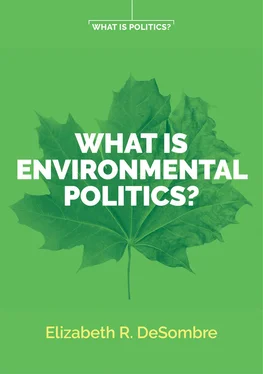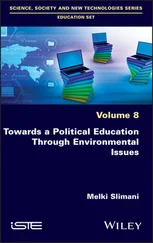We also may be more likely to find substitutes for scarcer, or more expensive, resources. Some people will start taking the bus or subway instead of driving, which could count as both conservation (of fuel) and substitution (of mode of transportation). An electric utility that previously generated electricity with fossil fuels might instead substitute nuclear power or electricity generated by wind. Any of these approaches might have been less convenient or more expensive than using fossil fuels, but once the price of fossil fuel rises the substitution makes sense.
Underpinning all of this is innovation. Because people want to conserve gasoline when it becomes more expensive, they will be more likely to buy fuel-efficient cars, so that gives an incentive to automobile engineers to develop cars that use less fuel. Finding other ways to provide energy that doesn’t rely on fossil fuels also makes sense as prices rise – someone has to innovate the ways to get energy from wind or sun and to connect it to a power grid, and it is worthwhile spending the money and effort to do that if the cost of fossil fuels is higher.
Another aspect of innovation involves accessing resources that are more remote and difficult to retrieve. As oil prices rose in the 1970s for a variety of reasons, oil companies were willing to invest more resources in exploration. Since they could earn more per unit of oil they could access, they were able to invest more in finding or extracting it. It was during this period, for instance, when drilling for oil in the deep ocean (such as the North Sea) became cost-effective. 5It was hard, and dangerous, and required the invention of new technologies to be able to drill deeper and extract and transport the oil. But it was worthwhile for oil companies to invest in this technology, and for inventors to work to create it, because the amount for which each barrel of oil would sell had increased. Likewise, it was worth exploring for oil in places where it was less likely to be found, because, if it were discovered, the payoff would make up for some of the unsuccessful efforts.
We could do the same mental exercise with any non-renewable resource, such as trees or water. As they become scarcer, individuals and society will conserve, substitute, and innovate in ways that both decrease use of the resource and access new reserves of it. So why is it, when we could have more renewable resources if we were just able to leave them be for a while, that we so frequently do deplete these resources, sometimes beyond recovery?
Although demand is the most important determinant of resource prices, these processes of conservation, substitution, and innovation help account for the volatility in prices (and the reason that, in some years of the decade-long bet, Ehrlich would have won the wager he made with Simon). After prices rise and these factors change behavior, prices are likely to fall as the new sources have been accessed and conservation and substitution have decreased consumption. The price trend may be generally upwards, but with notable fluctuations. Some of the conservation and substitution will likely stick, however: once you’ve bought a more fuel-efficient car, you are likely to use less gasoline, and when you have building materials made out of plastic or aluminum you are no longer in the market for wood.
Were we to get to a point when we were almost out of oil or rare earth elements, or even wood, the price of that resource would be so high that it wouldn’t be cost effective to extract or use it. By that point society will have shifted to other ways of providing energy or technological components or building materials. It is in that sense that we will not run out.
The story of innovation and conservation sounds seamless, but it isn’t. When prices increase, real people suffer – especially those who are poor. New fuel-efficient or alternative energy cars may be invented, but, for people who simply can’t afford to buy a new car, increasing fuel prices will make their lives, at least in the short run, more difficult. The same situation transpires when policies are put in place to decrease the use of these resources through making them more expensive (either directly, by taxing them, or indirectly, by requiring decreased use, which increases the price). Not everyone will bear the same level of personal cost or disruption from these changes. Anticipation of such harms may make those types of policies politically unfeasible. People concerned that addressing climate change will make fuel prices higher may vote or work against taking action, even if they are concerned about climate change, because they fear the short-term costs. There are ways that these policies can be made less difficult for portions of the population, and considering those types of policies may help avoid some of the political pitfalls of trying to change environmental behavior.
Even though we may not, technically, use up the last of these resources, there are other reasons to pay attention to them. An important aspect of environmental concern is the ecological destruction that results from extracting resources. Once the most easily accessible sources of these materials have been exhausted, removing them can cause serious damage to landscapes and ecosystems. Mountaintop removal to access underground coal destroys ecosystems and pollutes waterways; mining and processing metals can put toxic chemicals and other dangerous substances into the air and water, among other harms.
Many of these non-renewable resources are themselves the cause of serious pollution, even apart from their extraction. Coal, oil, and gas cause air pollution and are major contributors to global climate change. So even if we are not in danger of actually running out of them, their use causes damage to the environment.
What does it mean to study politics, and how does that differ from looking at policy? Policy is the specific set of approaches society has chosen (often through governmental processes) to address problems or provide services to people. Politics, on the other hand, is the process within society for making those types of policy decisions. This distinction is important and often elided; we can’t understand the rules we create to prevent or address (or fail to prevent or address) environmental problems unless we begin by looking at the different preferences that various sectors of society have for economic or environmental benefits and the political structures through which these social decisions are made.
Those who advocate for policies to protect the environment often overlook the political aspect of policy: any decision involves a set of tradeoffs between different types of benefits or harms to different groups of people. Politics is the social process of arguing for, and deciding how to make, those tradeoffs. In that process, a simple policy idea may undergo major transformation as political jockeying attempts to carve out benefits for different constituencies. What to economists might look like a simple and effective tax on gasoline is likely to become much more complicated – and less environmentally effective – as exceptions are made for different populations or conditions. In addition, once passed, policy needs to be implemented, and it may face different levels of political capacity to impose, monitor, or enforce rules.
An essential aspect of this social process of politics is that, while good people may have different opinions about what the best option is, there is no inherently, objectively best way to resolve these tradeoffs. Even if we agree that global climate change is happening, is caused primarily by human activity, and will have problematic effects on people and other species, and even if we understand reasonably well what those types of effects will be, we can have different answers to the question of what, if anything, we should do to prevent it. Those different answers may come because of the direct benefits or costs experienced by different people, because of different levels of risk aversion or acceptance, or because of different ideologies or values.
Читать дальше












